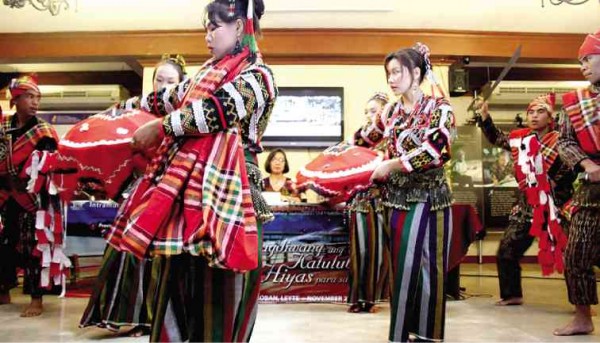
It’s a word that cuts across the multiple languages of the Philippines. Dayaw may mean many things: “praise” in Bisaya and Waray; “respect” and “honor” in Ilocano; “gathering” in T’boli, to name a few.
On top of these meanings is “feast”; hence, the Kadayawan Festival of Davao.
For the National Commission for Culture and the Arts (NCCA), it’s not only another excuse to foster the fiesta spirit which is part and parcel of Philippine life, but also to celebrate the diversity of Philippine culture as reflected in the variety of cultural communities around the country.
Now on its eighth year, the Dayaw Festival celebrates the multiple cultures of the indigenous people (IP) and ethnolinguistic groups of the Philippines.
This year’s theme is “Paipag-diwang ang katutubong hiyas para sa daigdig” (to celebrate the indigenous gems for the world).
Led by NCCA Commissioner Joycie Dorado-Alegre, head of the Subcommission on Cultural Communities, the festival will be held in Tacloban City, Leyte, Nov. 27-29.
“[Dayaw] emphasizes the positive values of our diverse cultures all over the Philippines,” Dorado-Alegre said. “It’s a grand gathering of the ethnolinguistic groups from all over the country.”
The festival is seen to be a multifaceted event, showing the various aspects of IPs’ lives through an arts-and-crafts exhibit and bazaar, forums, performances, and a food festival. A fashion show and film screening are new additions this year.
“[The festival seeks] to foster understanding and [raise the] awareness of the youth (about IPs),” said Dorado-Alegre. “That’s the problem with us Filipinos. Our interaction is simply limited to the online world.”
While IPs are proud of, and celebrate, their culture, passing on their heritage and traditions to the youth is a great problem. It is compounded by emergent technologies that the youth have become fixated with. It seems only youth folk-dance groups are aware about IPs, Dorado-Alegre said.
In fact, two dance groups performed in the press conference held by the NCCA to announce the festival—the Mamayog Maguindanao Dance Ensemble and Kaheligal Cultural Dance Troupe, the latter from the T’boli community (Kaheligal means “happiness” in T’boli).
The Maguindanao dance was distinguished by wild movements, green costumes, and elaborately decorated hats of the dancers. Drums and brass gongs were used.
The second dance was a survey of the T’boli way of life—how a warrior fights for the hand of a young maiden; how a mother cares for her child.
The dance was distinguished by hip movements, accented by the brass bells on the women’s belts. The men danced with their kris and kalis.
IP leaders said they hoped youth participation in indigenous folk dance would extend to other aspects of life of the cultural communities.
“We should be an inspiration to the youth and the next generations,” said Reden Ulo, secretary of the Southern Cultural Committees.